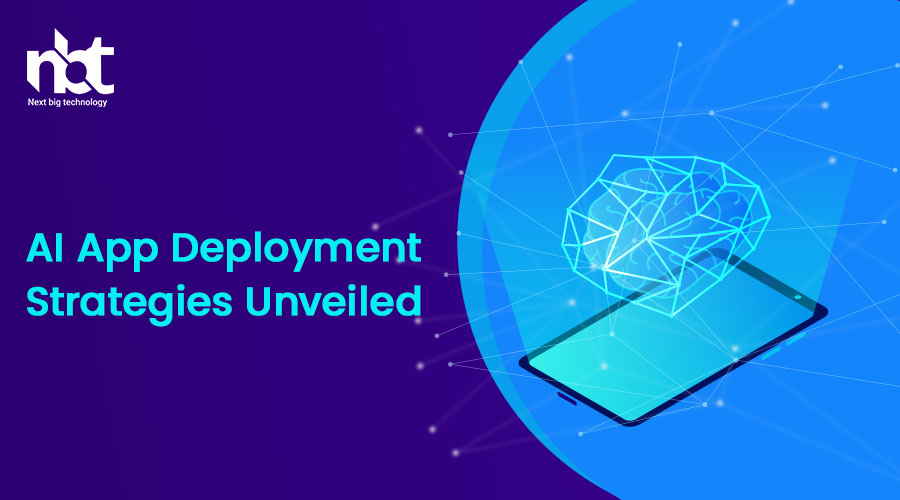Table of Contents
Introduction
In the dynamic landscape of artificial intelligence, deploying AI applications efficiently is paramount for success. AI app deployment strategies play a pivotal role in ensuring seamless integration and optimal performance. This article dives into the intricacies of AI app deployment, addressing challenges, exploring strategies, and highlighting real-world examples.
Understanding AI App Deployment
AI app deployment is the process of making AI models and applications accessible to end-users. This involves a series of steps, from model training to integration into existing systems. Key components include data preparation, model selection, and system compatibility checks.
Challenges in AI App Deployment
Despite the advancements in AI, deployment poses challenges. Common issues include data compatibility, scalability concerns, and ensuring the model’s adaptability to real-world scenarios. Overcoming these challenges requires innovative solutions and a proactive approach.
Strategic Planning for Deployment
Strategic planning is the cornerstone of successful AI app deployment. It involves thorough consideration of the application’s purpose, user base, and potential challenges. A well-devised plan sets the foundation for a smooth deployment process.
Types of AI App Deployment Strategies
Various strategies exist for deploying AI applications, including phased deployment, A/B testing, and canary releases. Choosing the right strategy depends on the application’s complexity, user impact, and the organization’s risk tolerance.
Continuous Monitoring and Optimization
Post-deployment, continuous monitoring is essential for identifying performance issues and making necessary adjustments. Optimization strategies ensure that the AI application evolves with changing requirements and user feedback.
Real-world Examples
Examining successful AI app deployments provides valuable insights. Case studies of companies implementing AI effectively offer lessons in overcoming challenges and achieving positive outcomes.
Future Trends in AI App Deployment
The future of AI app deployment is shaped by emerging technologies such as edge computing and federated learning. Predicting and adapting to these trends is crucial for staying ahead in the rapidly evolving AI landscape.
Security Measures in AI Deployment
As AI deals with sensitive data, robust security measures are imperative. Ensuring data integrity, encryption, and compliance with privacy regulations are crucial elements of a secure deployment process.
User Adoption and Training
User-friendly interfaces and effective training strategies are essential for user adoption. Ensuring that end-users can interact seamlessly with AI applications enhances the overall success of deployment.
Cost Considerations in Deployment
Analyzing the financial aspects of AI app deployment is essential. Cost-effective strategies, such as cloud-based solutions and open-source frameworks, can significantly impact the overall deployment budget.
Integrating AI with Existing Systems
Integrating AI seamlessly with existing systems can be challenging. However, the benefits, such as improved efficiency and data-driven decision-making, make it a worthwhile endeavor.
Overcoming Resistance to Change
Resistance to change is a common hurdle in deploying AI within organizations. Addressing concerns, providing education, and showcasing tangible benefits help overcome resistance and foster a culture of innovation.
Regulatory Compliance
Ensuring compliance with industry regulations and ethical considerations is non-negotiable. Adhering to legal standards is not only a requirement but also a key factor in gaining trust from users and stakeholders.
Conclusion
In conclusion, the successful deployment of AI applications requires meticulous planning, strategic thinking, and the ability to adapt to emerging trends. By addressing challenges, leveraging effective strategies, and staying abreast of technological advancements, organizations can ensure a seamless and impactful AI app deployment.
FAQs
- What is AI app deployment?
- AI app deployment involves making AI models and applications accessible to end-users, encompassing processes from training to integration.
- How can organizations overcome resistance to AI adoption?
- Organizations can overcome resistance through education, showcasing benefits, and fostering a culture of innovation.
- What are the key security measures in AI deployment?
- Key security measures include data encryption, ensuring data integrity, and compliance with privacy regulations.
- Why is continuous monitoring essential post-deployment?
- Continuous monitoring identifies performance issues, allowing for timely adjustments and optimizations.
- What role do user-friendly interfaces play in AI deployment?
- User-friendly interfaces are crucial for enhancing user adoption and overall success in AI deployment.
Thanks for reading our post “AI App Deployment Strategies Unveiled”. Please connect with us to know more about “AI App Deployment Strategies.















